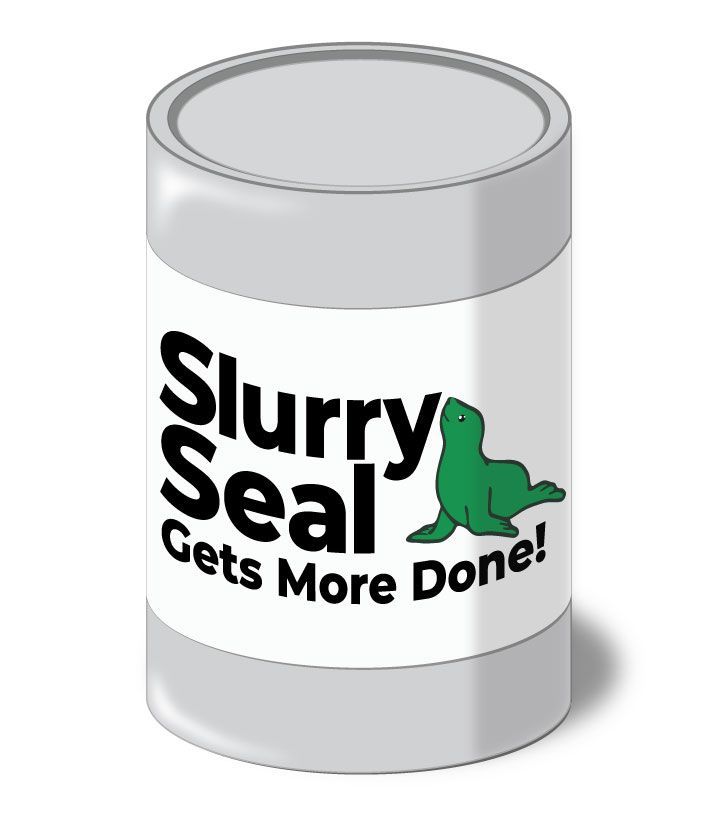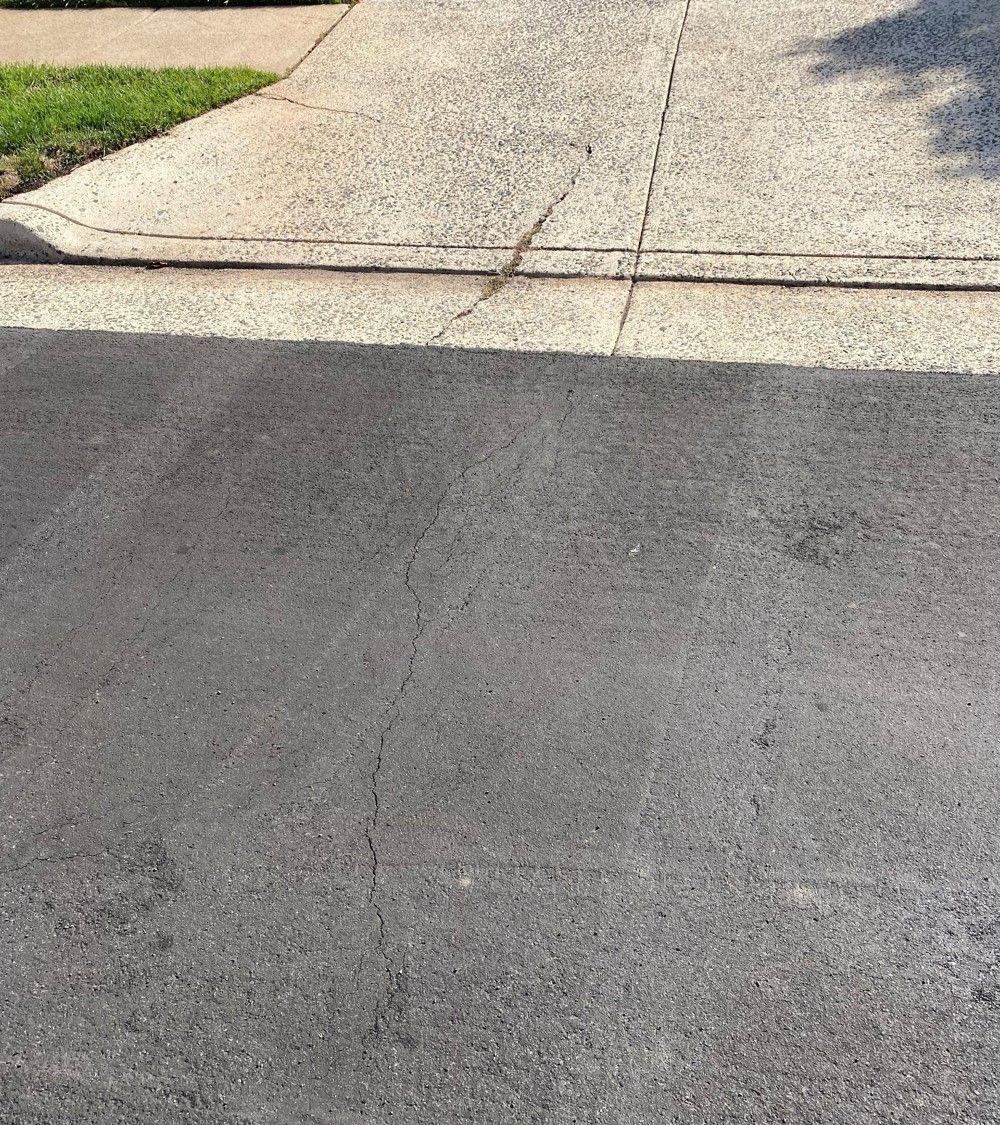Patching - When age, water intrusion or base problems create failures on the surface, they can be patched with new asphalt to extend the service life of the road. Doing so provides a stronger and more uniform surface for the new cape seal to conform to.
The Cape Seal Preservation Process
Cape Seals are a combination of two treatment types that work together to provide a durable new road surface - a chip seal followed by a top layer of asphalt slurry surfacing. The chip seal gives the road additional structure and seals cracks and the slurry seal provides extra strength and a smoother riding surface. Read below how projects are generally accomplished and what you should expect throughout the process. Also find valuable information about driving, parking, and getting around during installation, as well as how you can help us ensure it's safe and successful.
Also, be sure to check out the Chip Seal and Slurry Seal / Microsurfacing videos to see the processes in action.
Before Chip
While the chip seal portion of the cape seal will seal cracks and correct many minor surface issues, some failed asphalt will need to be replaced with new patches.
What's entailed?
Patching
- Takes one to three days depending on road conditions
-Includes potholes, utility cuts, wide cracks, major “alligatoring”
-Fairly fast and non-intrusive
-Localized parking restrictions
Eradication
-Thermoplastic markings removed


Eradication - Thermoplastic road markings have to be addressed in order for the chip seal's liquid asphalt to bond properly. In neighborhoods, this is usually crosswalks and stop bars. The eradication process grinds the surface of the markings to leave a surface that the asphalt can bond to. The markings are usually still visible as shown in the photo. Painted markings don't need eradication. Temporary markings aren't usually required on low-volume neighborhood streets.
During Chip
The actual chip seal process is fairly fast-moving, usually taking no more than an hour on the average neighborhood street. Liquid asphalt is sprayed onto the road and a spreader follows behind dropping crushed aggregate "chips" into the asphalt. They are followed by rollers that embed the chips. One side is done at a time to allow for movement of traffic. They new new surface can be driven on following the rolling of the chips.
NOTE: Be advised, after installation there will be loose aggregate on the road surface for one to two weeks at which time it will be swept up. This time frame is dictated by the supervising road authority. Caution should be utilized until the road is swept.

Notification: 2-3 Days Before Chip Seal
-Notices will be distributed with dates and instructions
-Generally, No Parking signs with the most current dates will be posted in advance
-If we're delayed by weather or other circumstances, signs will be updated

Road Prep: Staging
- Equipment is staged on or near the street to be paved
- Manhole and utility covers are protected
- Traffic personnel get into position to help ensure a safe work zone and assist motorists
TIP: This is a good indication the chip seal application process will begin shortly.

Road Prep: Sweeping
- The road is swept to ensure the liquid asphalt emulsion achieves a good bond with the existing road
- Fast-moving so it causes very little disruption to traffic
TIP: This signifies that the chip seal application is imminent and residents should exit their driveways if they are planning on leaving within the hour.

Install On One Lane/Side
The actual application of a chip seal happens very quickly and is performed by multiple pieces of equipment that follow one after another.
- First, the distributor truck sprays liquid asphalt onto the road surface sealing it and any cracks that might be present. The liquid asphalt is the binder that holds the gravel "chips" in place. The asphalt emulsion distributor truck places one lane of asphalt emulsion leaving at least one lane open.
- Second, a spreader truck follows behind the distributor truck placing a layer of stone "chips" onto the liquid asphalt.
- Third, the chip spreader is followed by a rubber wheel roller and a steel drum roller. The rollers embed the chips into the liquid asphalt.
The black liquid asphalt emulsion should not be driven on at all.
TIP: Drive slowly, follow signage and watch for the direction of traffic control personnel to ensure everyone's safety.
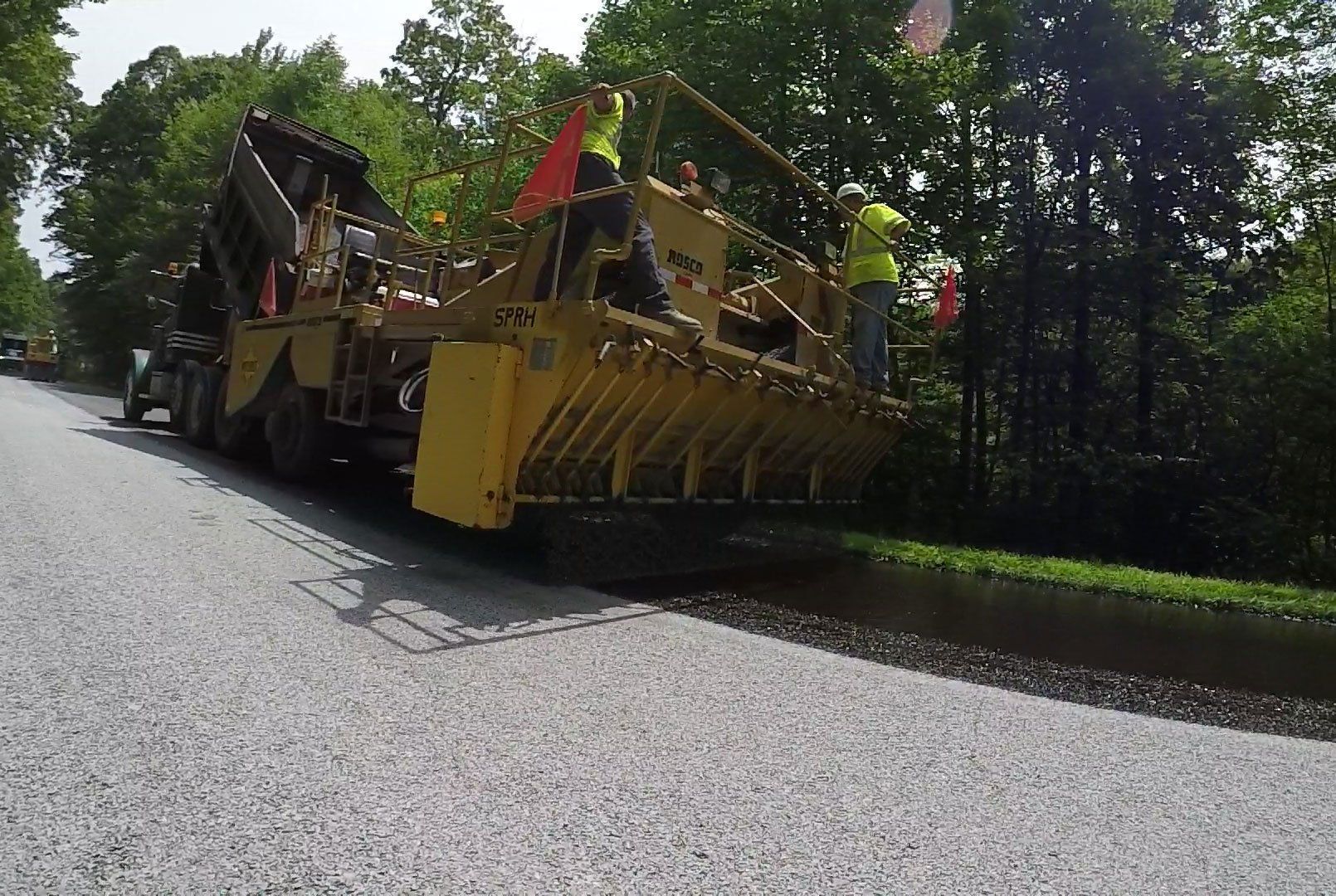
Finish The Road
- When the first lane has had its chips placed and rolled, the other side of the road is completed in the same manner as the first.
- At least one lane will be available at all times (except for the ends of cul-de-sacs).
- You will always have access to and from your home, but may not be able to get through the work crews if they are immediately in front of your home.
TIP: The most you will have to wait to get out of your drive is 15 or 20 minutes. If you have an emergency, flag down a crew-member who can direct you to the crew chief who will assist you.

NOTE: Cul-de-sacs
The ends of cul-de-sacs are done all at once and may be closed to traffic while the surface treatment is installed. This can usually be done in under 30 minutes. Afterwards, you can drive on the new surface.
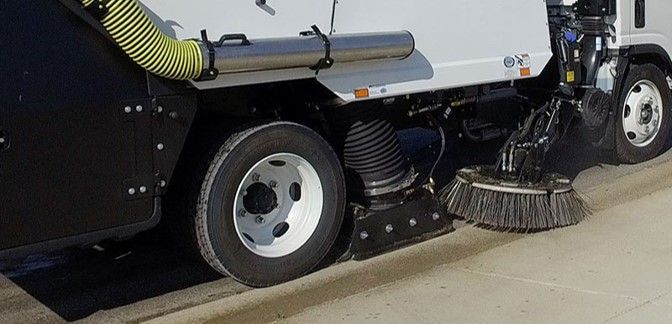
Once the chip seal has had time to cure and wear in, the loose aggregate will be swept up. The time to sweep is directed by the terms of the contract and is usually 10 days to two weeks minimum.
SAFETY NOTE: Extra caution should be taken during this time and speeds should not exceed 35mph.
During Slurry
After the chip seal has had a chance to cure, the slurry seal can be placed. The actual application of the slurry seal is fairly straight-forward. The road is prepped and the slurry machine places material leaving one lane open for access. The machine will likely spend less than five minutes in front of a home or 30 minutes on a street. When the slurry is dry enough for traffic, usually 1-4 hours, the remaining side/lane is completed. You can watch a video of the process here.
TIPS: You will not be able to get out of your drive for a brief time after a slurry surface is applied, so park your vehicle within walking distance if you need to leave after the daily start time.
If you need to make special arrangements, call your local crew supervisor whose number will be on your notice. We understand that life happens and will work to accommodate you.

Notification: 2-3 Days Before Slurry Seal
-Notices will be distributed with dates and instructions
-Generally, No Parking signs with the most current dates will be posted in advance
-If we're delayed by weather or other circumstances, signs will be updated

Road Prep: Application Imminent
-Utilities are covered, cones are staged and the road is swept to ensure a good bond
-Fairly fast-moving processes so it causes very little disruption to traffic or routine
TIP: Sweeping signifies that the slurry seal application is imminent and residents should exit their driveways so they don't get blocked in by a lane of wet slurry.

Slurry Seal Application
- First Pass: The crew begins by placing one lane of the slurry treatment down and marking it off with cones
- Wet slurry should not be driven on at all
- The lane will be closed for 1-4 hours to allow the surface to dry enough to pass over
- Length of time depends on treatment type and weather conditions - you'll know it's safe to drive on when the cones have been removed. The dry lane will be much darker than a wet lane as shown in the next photo.

Slurry Seal Application
- Second Pass: After the first lane has dried enough for traffic, the second lane is applied.
- At least one lane will be available at all times.*
- You will always have access to and from your home, but may not be able to cross the wet slurry for up to an hour.
TIP: Note the brown color of the fresh, wet slurry seal and the charcoal gray color of the dry slurry. Color is a good indicator of when the slurry seal is dry.
TIP: If you're in a bind and have to cross wet slurry to get in or out of your drive, call the local crew chief to spread some of the crushed stone aggrregate in front of your drive so you can cross safely. The supervisor's number is on the notice. Please note that the material will discolor the new surface until it wears in, so leaving before the slurry goes down is preferable.
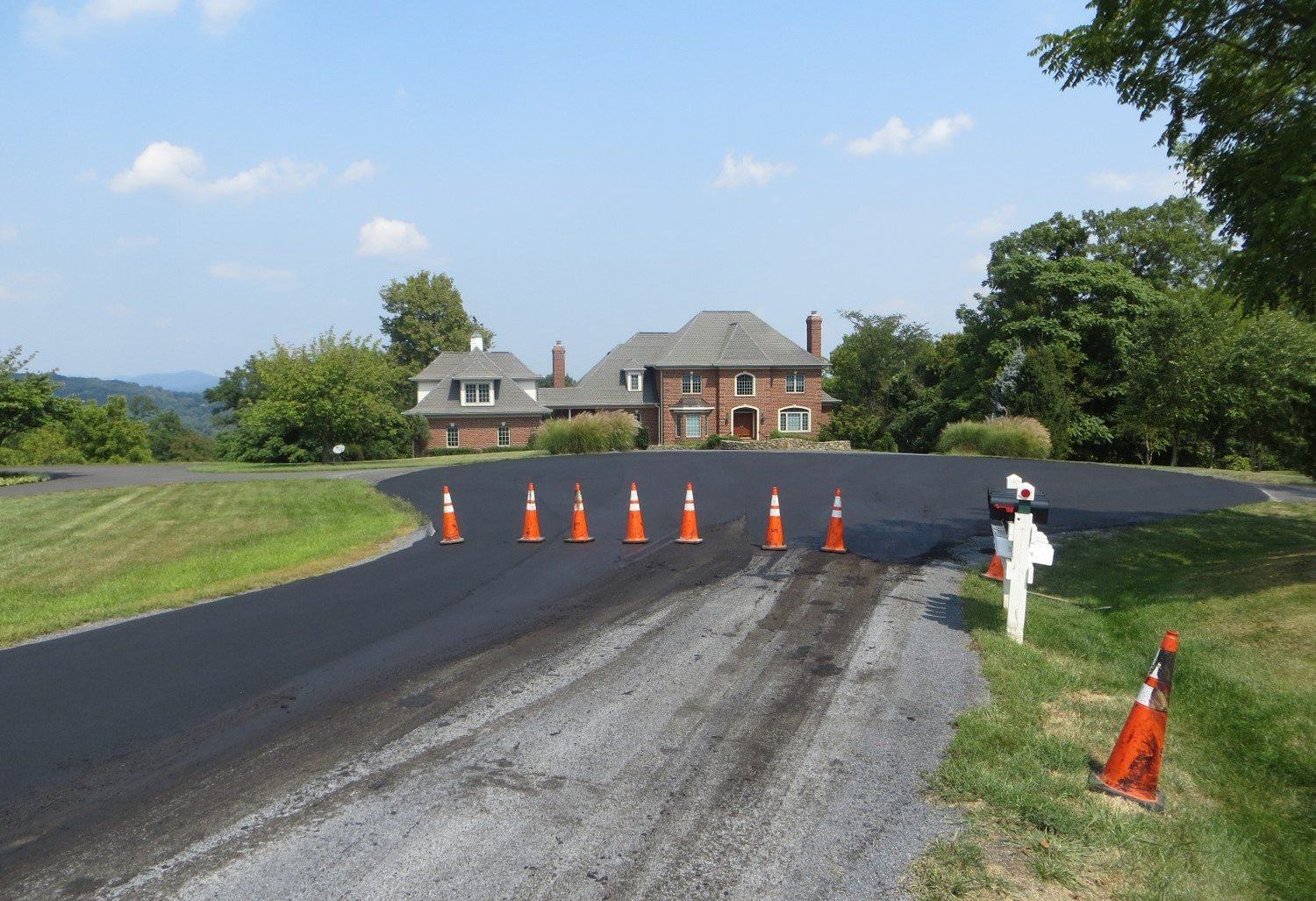
NOTE: Cul-de-sacs
Some cul-de-sacs need to be completed all at once. If this is the case, residents will be notified.
In some instances, homeowners have told us they would prefer it be done all at once to get it done faster. If this would be preferable for you and your neighbors, please let the supervisor on your notice know. Doing so makes it easier on everyone.
After Slurry
Once the slurry seal has been placed, it has to dry, cure and wear in to its final profile. This process may include some color normalization as well as "ravelling" off of surface stone as the slurry seal smooths in.
There will also likely be some clean-up necessary to meet standards. This will include sweeping up the stone ravel that accumulates, as well cleaning off any excessive amounts of slurry seal or debris in the curbline.
Throughout this process, you local road administrators will be inspecting the work and communicating anything that we need to do to meet expectations.
TIPS: If you see something you would like us to inspect, please let us know. Please review the
common concerns and
common misconceptions for information about some of the things you might see and what they are.
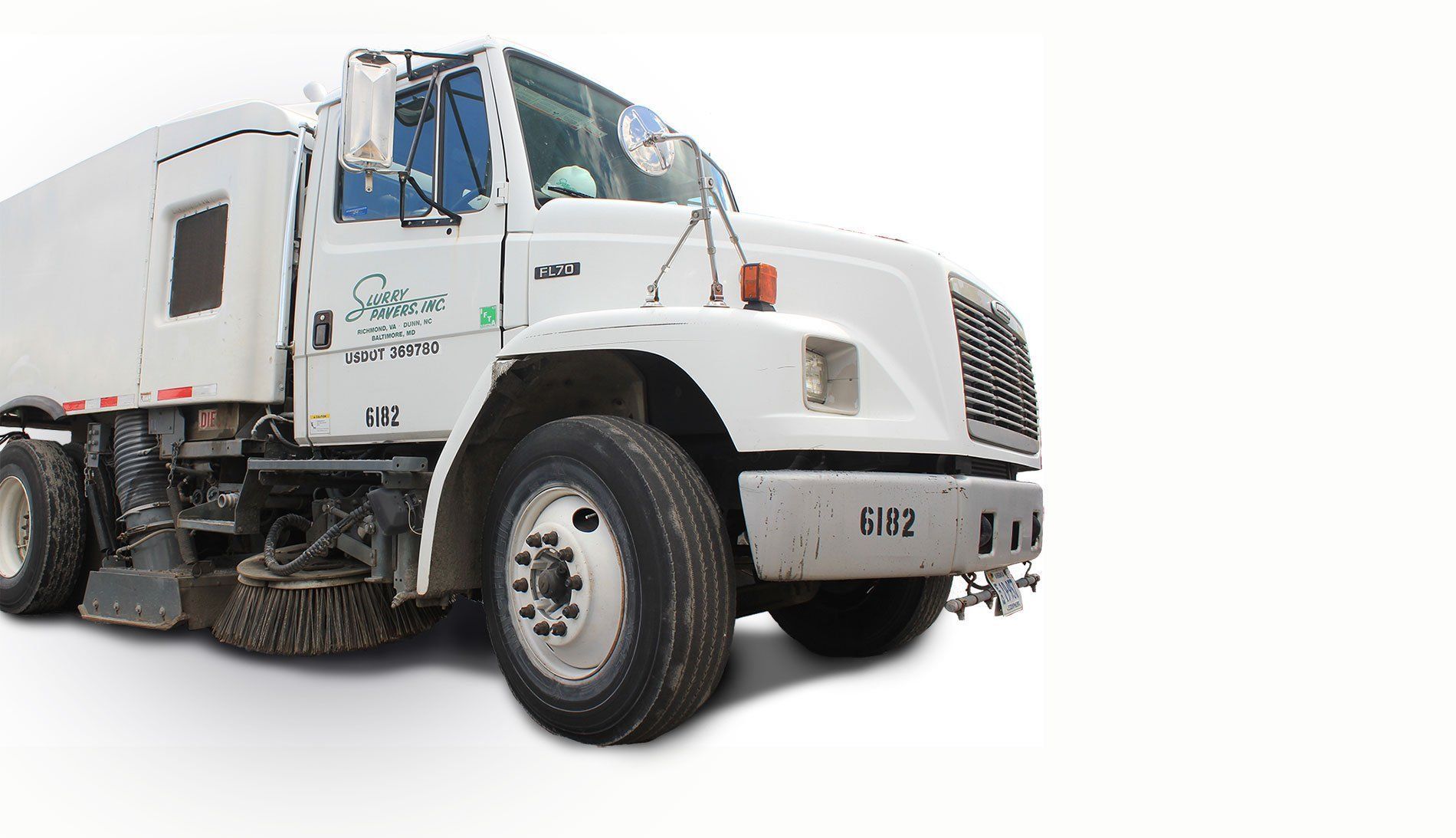
Sweeping: 1-2 weeks after application
Some of the fine surface gravel will wear out of the surface as it wears in and smooths out. The loose gravel is almost always no larger than 1/4 of an inch in diameter by design. There may also be some of the aggregate sand left at intersections or other areas where it was spread for traffic to cross. There may also be places along the curb where loose aggregate can accumulate.
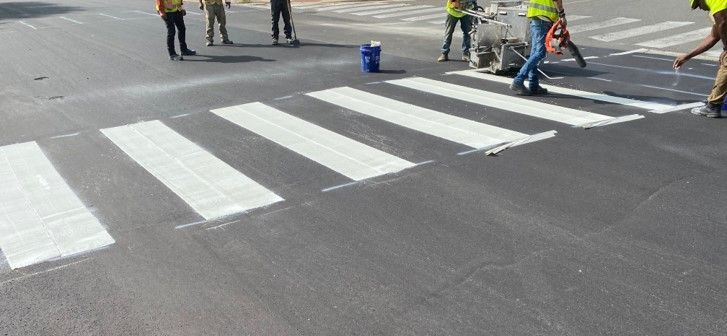
Striping: 2 weeks to 30 days after application
All road markings covered or eradicated prior to the project are replaced within the specified time limits and according to the terms of the contract. Placement and materials are the same as the originals unless specified in the contract.
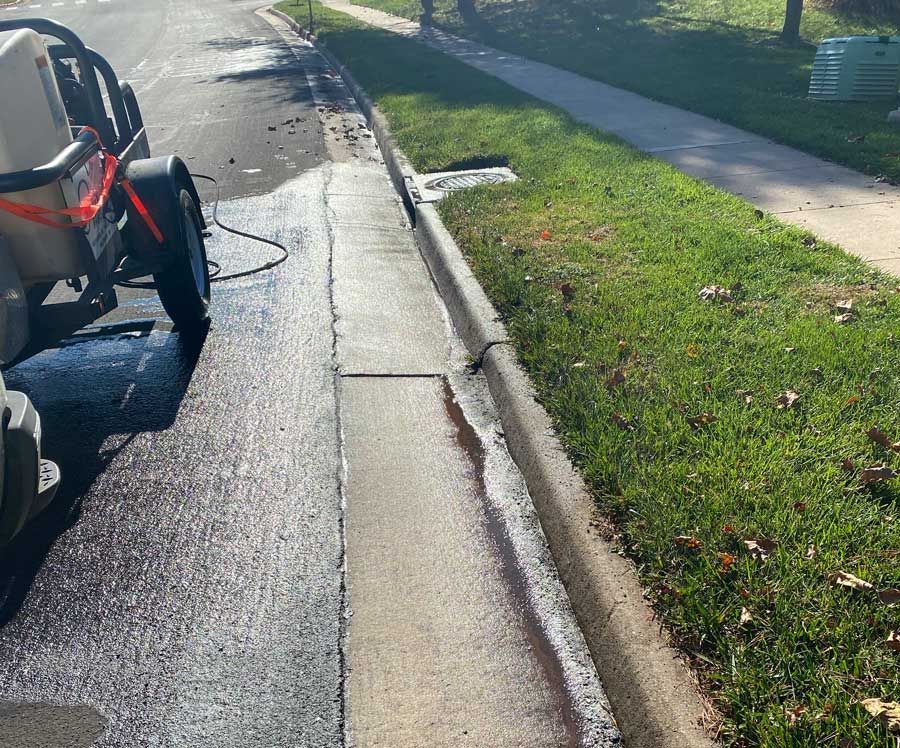
Punchlist and Quality Control
During installation, a punchlist is generated to make sure any necessary patching and/or cleaning is addressed. After sweeping and the completing the installation punch-list, we and our project inspectors will do a final quality control check. We'll make sure everything's been done to standards and that the seal is performing as it should.

NOTE: Power Steering Burns
Slurry seal's high asphalt content makes it especially vulnerable to scuffing while it cures. Most of these marks will disappear in time. See below for an example.
Here are some tips to help avoid creating scuffs.
-Avoid sitting still and turning your wheels or cutting the steering wheel hard like after backing out of a driveway or while parallel parking.
-Instead, after backing out, begin moving forward before turning your wheels. Moving while turning wheels will greatly reduce scuffing
-Keep speeds low to moderate for at least 24 hours and a few days if it's really hot outside.
Common Concerns
Sanding
In some areas, a finely crushed rock aggregate "sand" is spread at intersections to protect the wet slurry and vehicles. This will remain on the road while the surface cures and will be swept up a week or two after application. The finer particles in the crushed aggregate that's spread will embed into the surface asphalt and leave a gray stain. This will wear in and normalize with the rest of the surface over time. These photos were taken about two months apart.
Please note that this is what is spread if you call the supervisor in order to cross wet slurry at your drive.

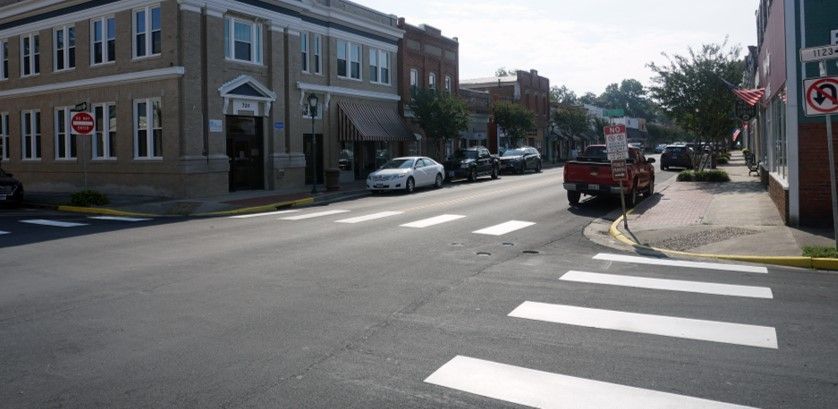
Surface Scuffing and Marring
Because of the high asphalt content and smaller size of the crushed aggregate used in slurry seals, they are vulnerable to surface damage from vehicles. This is true when they are new and during hot days until it fully cures. High temperatures will soften any type of asphalt material, including plant mix asphalt. The marks shown here are from driving and hard turning on a fresh slurry seal. As with this example, most of this type of marring will blend in in time. Note also the initial texture when it was first placed the texture after it had time to wear in. This road is a cul-de-sac with little traffic and the wear in shown occurred within the three months between photographs.
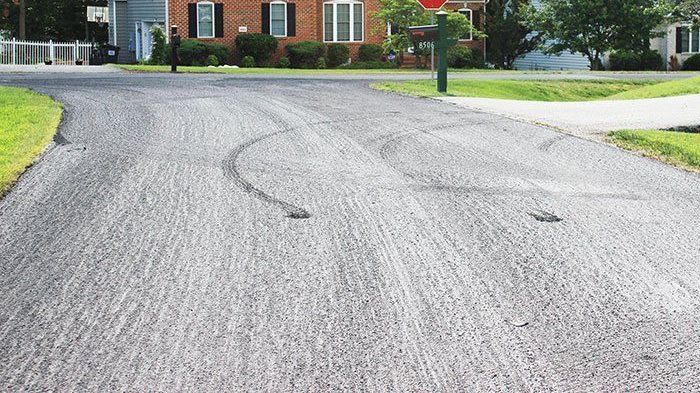

Final Texture
One thing we hear every season is that the texture is too rough. It's dangerous. It's bad for bikers. It's true that initially it is rougher than the plant mix surface they may be used to. But because slurry seal is a liquid asphalt resurfacer, it contains more asphalt and less large stone than the plant mix asphalt it's designed to protect. Slurry seal's smaller stones at the surface will give it a rougher texture initially, but will wear into the asphalt or out of the mix in the weeks after placement, thereby smoothing the surface. As the photos of slurry seal on the right from the Start/Finish of the 2015 UCI World Championship show, it will wear in and be great for cycling and anything else you want to do.
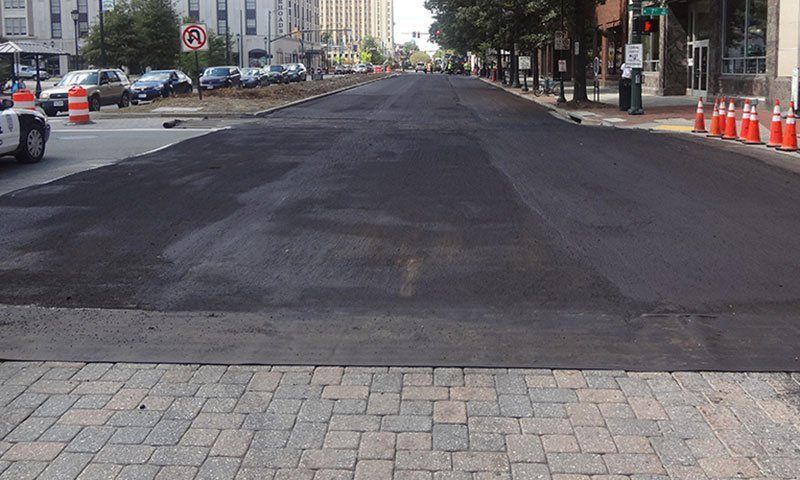

Discolorations
Under certain conditions, the surface of the slurry seal may not initially present its normal charcoal gray/black color. Though not often, brownish tints or white spots can occur. This will normalize given time.


Discoloration Marring
When there is discoloration in cul-de-sacs, the turning of heavy garbage trucks can leave unsightly tracks. This is a good sign as it is the discoloration normalizing. In this extreme example, the cul-de-sac looked like any other in a couple of months.


Chip Seal or Slurry Seal on Gutterpan
Sometimes an operator may make a mistake or may run into an equipment or environmental issue that causes material to get too far into the gutterpan. In these cases, like the extreme one shown here, the material will be cleaned from the gutterpan.


Clean-up Stains
The clean-up along the curbline can leave stains. In most cases, to try and remove the stains would cause damage to the concrete. However, as these pictures show, the stains will bleach out in the sun and disappear.


Common Misconceptions
-
Slurry Seal is our product.
Learn moreWe got our name because the company started with one truck trying to preserve asphalt roads with slurry seal. But it's not our product. It's a pavement preservation surfacing system that's been used around the world since the 60's. The slurry seals we place are produced with contract-specified materials and mix designs. Every project is monitored and inspected by the contracting road authorities to ensure it meets requirements.
-
Cracks shouldn't return.
Learn moreCracking is an unfortunate issue that in many cases can only be corrected by reconstruction of the road. The reason is that the cracks come from failure at the the base of the road or from compaction issues around utilities when the neighborhood was built. These cracks will reflect back to the surface regardless of what kind of surface is placed - including plant mix asphalt. However, because the cape seal preservation process involves spraying liquid asphalt into the cracks, rather than simply overlaying them with asphalt, the road is better protected.
-
Regular aspalt doesn't do X.
Learn moreThe images above illustrate concerns we hear about and are believed to illustrate a defective product or an unconcerned company. However, they are not inherint to slurry seals or Slurry Pavers. Discolorations, scuffing, marring, imperfect curblines, material in gutterpans, etc. are present on all road jobs. These images were taken on a plant mix resurfacing job. The unique benefit of slurry seal is that it is very forgiving so most of these things normalize or wear in. Anything else noted that needs cleaning or correction gets addressed.
Slurry Pavers, Inc. 3617 Nine Mile Road, Richmond, VA 23223
Main Office: (804) 264-0707 Resident Inquiries: (804) 716-7860
| All Rights Reserved |

